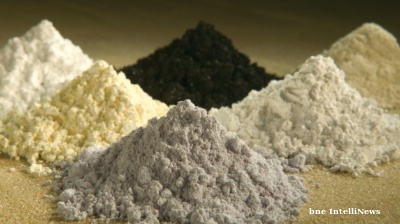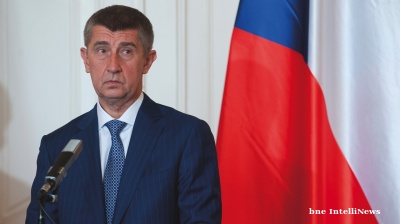Russian CPI slowed by 0.3 percentage points to 5.5% year on year in April and is likely to remain around that level until November-December, when the high base effect will become strong enough to overcome the persistent upward price pressures that are still present in the key consumer segments. The Central Bank of Russia (CBR) is likely to keep tightening at the coming meetings.
Inflation off its peak, but not out of the woods
The April CPI result of 5.5% y/y is in line with our forecast (consensus was split between 5.5% and 5.6%) and points at a deceleration from the March peak of 5.8% y/y; however, we are not in a rush to take the numbers as a sign of sustainable relief.
A higher base effect (in April 2020 the y/y CPI rate jumped 0.6% vs. March, reacting to the pandemic/lockdown shock) is the sole factor of this slowdown.
The food segment was the only one to show deceleration (Figure 1), and even within it only volatile fruits and vegetables, as well as cereals and beans, showed a noticeable slowdown, while the remaining major food groups, such as bread, meat, fish, dairy and sugar kept showing price growth rates close to those of the previous month.
Non-food products and services failed to take advantage of the higher base effect and kept posting higher annual growth rates (Figure 1), and their contribution to the overall CPI growth increased from 3.0 ppt in March to 3.1 ppt in April (Figure 2), according to our estimates. The key drivers in this acceleration were gasoline (which is now up 5.9% y/y, higher than the overall CPI growth, despite the government's measures), construction materials, reflecting the housing and home improvement boom, and various services including medicine, local recreation and insurance.
Inflationary risks going forward include global agro inflation, local PPI, and elevated household expectations
For the coming months we expect inflationary pressure to remain elevated for several reasons.
First, the global agriculture prices (Figure 3) remain a risk factor, with wheat, sugar and sunflower oil back in high double-digit growth on a combination of strong demand and supply concerns. Should the global price growth continue, it should prevent local food prices from showing disinflation.
Second, the elevated PPI and corporate inflationary expectations (Figure 4) are another risk factor for the local consumer prices, especially given that last year's corporate profits were down 24% y/y according to Russian accounting standards, suggesting limited room for the producers to absorb input price growth in all the key consumer segments.
Third, the local CPI does not yet fully reflect services in the coronavirus (COVID-19) affected areas, such as foreign tourism, given the still existing restrictions for travel to Russians' most popular resort destinations such as Turkey and Egypt (the latter is expected to be re-opened for charter flights in May). Potential re-opening of those may somewhat ease the local consumption pressure on prices but is unlikely to diminish the overall inflationary risks for the consumers.
Finally, the elevated CPI expectations by the households (Figure 5), propelled by actual price growth in socially sensitive items as well as high government and media attention, are also a risk factor, which may prevent disinflation in the coming months.
CPI to stay around 5.5% y/y till November, year-end forecast of 4.5% at risk
The April CPI reading and its composition suggest elevated CPI risks in the near term. We would not exclude some minor uptick in May, followed by CPI staying around 5.5% y/y until November, despite the favourable base effect. Only at the year-end the higher base effect should be strong enough to assure annual inflation falling to 4.5% y/y in December and potentially to 4.0% in 1Q22. At the same time, we acknowledge that given the risk profile those expectations look optimistic.
The pace and structure of the CPI growth, with higher contribution of non-food and services CPI, amid acceleration of retail lending and slowdown in retail deposit growth, should keep the CBR concerned with the monetary component of inflation. We reiterate our call that the key rate, currently at 5.0%, has a 50 basis point upside this year, which may be realised in the next 2-3 board meetings.





Dmitri Dolgin is the chief economist for Russia at ING. This note first appeared on ING’s THINK.ING portal here.
Content Disclaimer: This publication has been prepared by ING solely for information purposes irrespective of a particular user's means, financial situation or investment objectives. The information does not constitute investment recommendation, and nor is it investment, legal or tax advice or an offer or solicitation to purchase or sell any financial instrument. Read more
Opinion

COMMENT: Hungary’s investment slump shows signs of bottoming, but EU tensions still cast a long shadow
Hungary’s economy has fallen behind its Central European peers in recent years, and the root of this underperformance lies in a sharp and protracted collapse in investment. But a possible change of government next year could change things.

IMF: Global economic outlook shows modest change amid policy shifts and complex forces
Dialing down uncertainty, reducing vulnerabilities, and investing in innovation can help deliver durable economic gains.

COMMENT: China’s new export controls are narrower than first appears
A closer inspection suggests that the scope of China’s new controls on rare earths is narrower than many had initially feared. But they still give officials plenty of leverage over global supply chains, according to Capital Economics.

BEYOND THE BOSPORUS: Consumed by the Donald Trump Gaza Show? You’d do well to remember the Erdogan Episode
Nature of Turkey-US relations has become transparent under an American president who doesn’t deign to care what people think.



